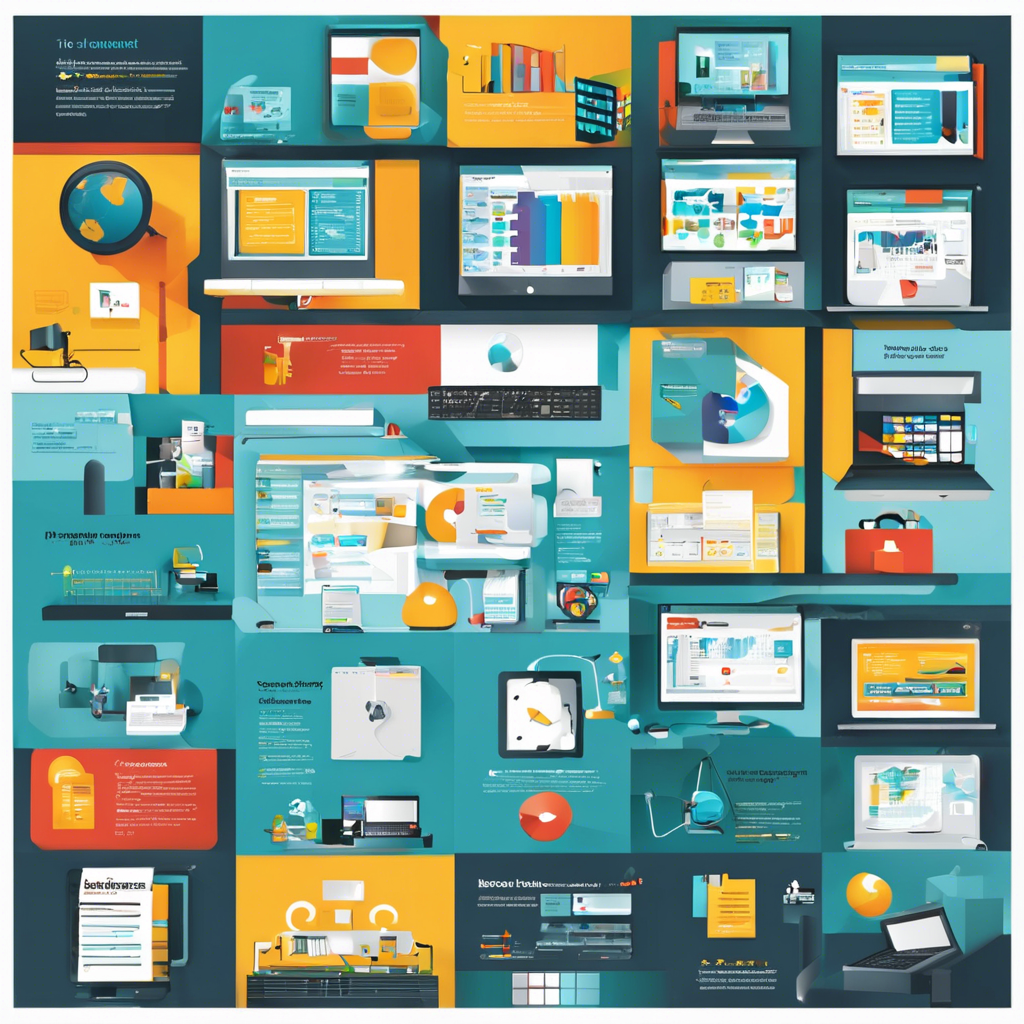IT asset management software plays a crucial role in helping organizations effectively track, manage, and optimize their IT resources. With the increasing reliance on technology in today’s business landscape, the need for efficient IT asset management solutions has become more paramount than ever before. These software tools provide businesses with the capabilities to monitor, control, and secure their IT assets, ultimately leading to improved operational efficiency and cost savings.
One of the key benefits of IT asset management software is its ability to provide organizations with a comprehensive view of their IT infrastructure. By centralizing all asset-related information in a single platform, businesses can easily track the entire lifecycle of their IT assets, from procurement to retirement. This visibility allows organizations to make informed decisions regarding asset utilization, maintenance, and upgrades, leading to better resource allocation and cost control.
Additionally, IT asset management software helps organizations ensure compliance with regulatory requirements and internal policies. By maintaining accurate records of software licenses, hardware configurations, and warranty information, businesses can proactively address compliance issues and avoid costly penalties. Furthermore, these software tools enable organizations to conduct regular audits to verify asset inventory and usage, ensuring that all IT resources are accounted for and utilized efficiently.
Another significant advantage of IT asset management software is its role in enhancing cybersecurity. With the increasing frequency and sophistication of cyber threats, protecting sensitive data and IT assets has become a top priority for organizations. These software tools help businesses identify and mitigate security risks by monitoring asset configurations, detecting unauthorized changes, and enforcing security policies. By proactively managing IT assets, organizations can strengthen their overall security posture and reduce the likelihood of data breaches.
Moreover, IT asset management software facilitates efficient resource allocation and capacity planning. By providing insights into asset performance, usage patterns, and maintenance schedules, these tools enable organizations to optimize resource utilization and avoid unnecessary downtime. With real-time visibility into IT assets, businesses can make informed decisions regarding asset allocation, upgrades, and replacements, ensuring that resources are utilized effectively to support business operations.
Furthermore, IT asset management software streamlines IT procurement processes and vendor management. By automating workflows for asset requisition, approval, and procurement, these tools help organizations streamline the purchasing process and reduce administrative overhead. Additionally, by maintaining a centralized repository of vendor contracts, service agreements, and license renewals, businesses can effectively manage vendor relationships and ensure timely renewals and compliance.
In addition to improving operational efficiency and cost savings, IT asset management software also enhances decision-making and strategic planning. By providing real-time insights and analytics on asset utilization, performance metrics, and lifecycle costs, these tools enable organizations to make data-driven decisions regarding asset investments, upgrades, and retirements. This proactive approach to asset management helps businesses align IT resources with business objectives and drive strategic initiatives.
Moreover, IT asset management software plays a crucial role in facilitating collaboration and communication within IT teams. By providing a centralized platform for asset tracking, maintenance schedules, and documentation, these tools enable IT teams to work more efficiently and collaboratively. With shared access to asset information and workflows, teams can streamline communication, resolve issues faster, and ensure consistent asset management practices across the organization.
Additionally, IT asset management software helps organizations mitigate risks associated with hardware and software vulnerabilities. By maintaining an inventory of all IT assets, including software versions, patches, and updates, businesses can identify and remediate security vulnerabilities in a timely manner. These software tools enable organizations to implement patch management processes, software updates, and vulnerability assessments to reduce the risk of cyber threats and ensure a secure IT environment.
Furthermore, IT asset management software supports sustainability initiatives by promoting responsible IT asset disposal and recycling practices. By tracking asset lifecycles and end-of-life processes, organizations can ensure proper disposal of retired assets, reducing environmental impact and promoting sustainability. Additionally, these tools help businesses identify opportunities for asset reuse, recycling, and refurbishment, contributing to a more environmentally friendly IT infrastructure.
Moreover, IT asset management software enhances asset visibility and control across geographically dispersed locations. With the increasing trend towards remote work and distributed teams, organizations need tools that provide real-time insights into asset locations, configurations, and usage. These software solutions enable businesses to effectively manage IT assets across multiple locations, ensuring consistency, compliance, and security regardless of physical boundaries.
Additionally, IT asset management software helps organizations optimize software license usage and reduce costs associated with over-licensing and non-compliance. By providing visibility into software installations, license entitlements, and usage metrics, these tools enable businesses to identify underutilized licenses, reclaim unused software, and optimize license allocations. This proactive approach to software license management helps organizations reduce software costs and ensure compliance with licensing agreements.
Furthermore, IT asset management software offers scalability and flexibility to accommodate the evolving needs of organizations. With customizable workflows, reporting capabilities, and integrations with other IT systems, these tools can adapt to changing business requirements and IT environments. Whether managing a small IT infrastructure or a complex enterprise network, organizations can leverage IT asset management software to scale operations, automate processes, and drive efficiency.
Moreover, IT asset management software enhances data accuracy and integrity by eliminating manual processes and siloed information. By centralizing asset data in a single repository and automating data collection, organizations can reduce errors, duplication, and inconsistencies in asset records. This unified approach to asset management ensures data integrity, reliability, and accessibility, enabling organizations to make informed decisions based on accurate and up-to-date information.
Additionally, IT asset management software facilitates proactive maintenance and asset lifecycle management. By tracking asset configurations, warranties, and maintenance schedules, these tools help organizations schedule preventive maintenance, identify potential issues, and extend asset lifecycles. This proactive approach to asset management minimizes downtime, reduces maintenance costs, and prolongs the lifespan of IT assets, ultimately maximizing ROI and operational efficiency.
Furthermore, IT asset management software enables organizations to streamline asset tracking and inventory management processes. By automating asset discovery, tracking changes, and reconciling inventory records, these tools help businesses maintain an accurate and up-to-date inventory of IT assets. This real-time visibility into asset locations, configurations, and statuses enables organizations to optimize asset utilization, reduce asset loss, and improve overall inventory management practices.
Moreover, IT asset management software fosters transparency and accountability in IT asset management practices. By providing audit trails, user permissions, and activity logs, these tools enable organizations to track asset-related activities, monitor changes, and enforce accountability. This transparency ensures that IT asset management processes are compliant, secure, and aligned with organizational policies and best practices, fostering a culture of accountability and responsibility within the organization.
Additionally, IT asset management software supports disaster recovery and business continuity planning by providing organizations with a comprehensive view of IT assets and configurations. By maintaining asset documentation, backup plans, and recovery procedures in a centralized platform, businesses can ensure rapid recovery in the event of a disaster or system failure. These software tools enable organizations to identify critical assets, prioritize recovery efforts, and minimize downtime, ultimately safeguarding business operations and data.
In conclusion, IT asset management software plays a critical role in helping organizations effectively manage and optimize their IT resources. By providing visibility, control, and automation capabilities for IT assets, these software tools enable businesses to enhance operational efficiency, reduce costs, ensure compliance, and strengthen cybersecurity. As organizations continue to rely on technology to drive business growth and innovation, investing in robust IT asset management software is essential to maximizing the value of IT investments and driving sustainable business success.

